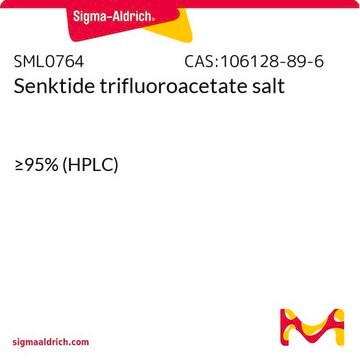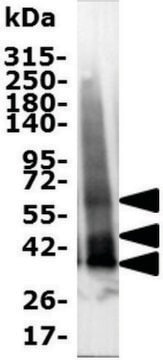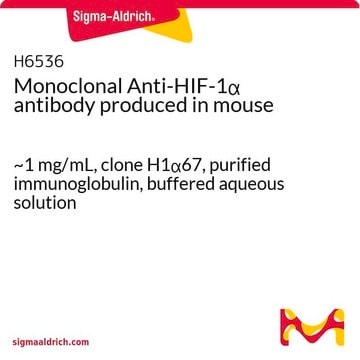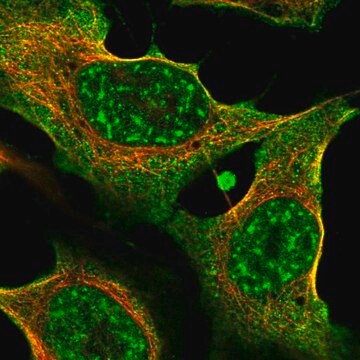MABF3068
Anti-CD163 Antibody, clone MAC2-158
Synonym(s):
Scavenger receptor cysteine-rich type 1 protein M130;Hemoglobin scavenger receptor
About This Item
Recommended Products
biological source
mouse
Quality Level
conjugate
unconjugated
antibody form
purified antibody
antibody product type
primary antibodies
clone
MAC2-158, monoclonal
mol wt
calculated mol wt 125.45 kDa
purified by
using protein G
species reactivity
human
packaging
antibody small pack of 100 μg
technique(s)
flow cytometry: suitable
immunocytochemistry: suitable
immunohistochemistry (formalin-fixed, paraffin-embedded sections): suitable
immunoprecipitation (IP): suitable
western blot: suitable
isotype
IgG1κ
epitope sequence
N-terminal
Protein ID accession no.
UniProt accession no.
shipped in
ambient
target post-translational modification
unmodified
General description
Specificity
Immunogen
Application
Evaluated by Immunohistochemistry (Paraffin) in human thymus tissue sections.
Immunohistochemistry (Paraffin) Analysis: A 1:250 dilution of this antibody detected CD163 in human thymus tissue sections.
Tested Applications
Immunohistochemistry (Paraffin) Analysis: A 1:250 dilution from a representative lot detected CD163 in human liver tissue sections.
Flow Cytometry Analysis: A representative lot detected CD163 in Flow Cytometry applications Maniecki, M.B., et al. (2011). Immunobiology. 216(8): 882-90; Krijgsman, D., et al. (2020). Int J Mol Sci. 21(16): 5925).
Immunocytochemistry Analysis: A representative lot detected CD163 in Immunocytochemistry applications (Maniecki, M.B., et al. (2011). Immunobiology. 216(8): 882-90).
Flow Cytometry Analysis: A representative lot detected CD163 in human peripheral blood mononuclear cells (PBMC) (Data courtesy of Jane Collins, Research Laboratory Manager of Dr. Paul M. Guyre s Lab, Department of Microbiology and Immunology, Geisel School of Medicine, Dartmouth College, NH, USA).
Western Blotting Analysis: A representative lot detected CD163 in Western Blotting applications (Maniecki, M.B., et al. (2011). Immunobiology. 216(8): 882-90).
Immunoprecipitation Analysis: A representative lot immunoprecipitated CD163 in Immunoprecipitation applications (Morganelli, P.M., et al. (1988). J Immunol. 140(7): 2296-304).
Note: Actual optimal working dilutions must be determined by end user as specimens, and experimental conditions may vary with the end user
Physical form
Storage and Stability
Other Notes
Disclaimer
Not finding the right product?
Try our Product Selector Tool.
Storage Class Code
12 - Non Combustible Liquids
WGK
WGK 1
Certificates of Analysis (COA)
Search for Certificates of Analysis (COA) by entering the products Lot/Batch Number. Lot and Batch Numbers can be found on a product’s label following the words ‘Lot’ or ‘Batch’.
Already Own This Product?
Find documentation for the products that you have recently purchased in the Document Library.
Our team of scientists has experience in all areas of research including Life Science, Material Science, Chemical Synthesis, Chromatography, Analytical and many others.
Contact Technical Service








